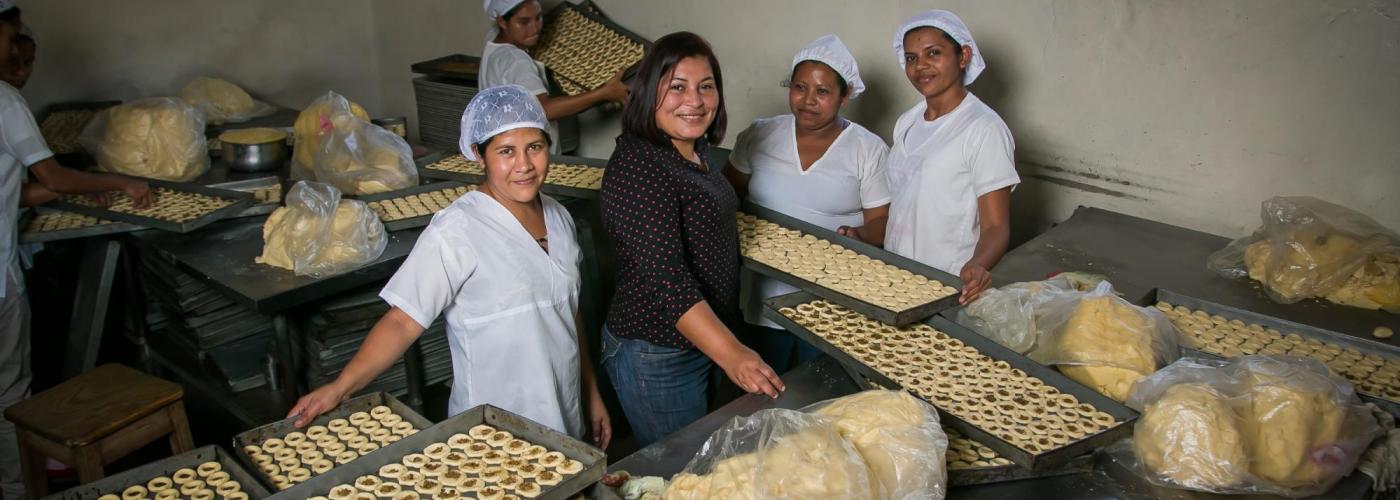Women-led Businesses Grow Revenues 1.5 Times Faster. So Why Don’t They Raise More Capital?
Image

This blog originally appeared on USAID's 2030 Medium webpage and was authored by Whitney Dubinsky and Elizabeth Chacko.
Earlier this year, we conducted a review of USAID’s Partnering to Accelerate Entrepreneurship (PACE) initiative. One finding really caught our attention. Among the entrepreneurs supported by PACE, those businesses that were owned by women grew both revenues and jobs significantly faster.
Through PACE, USAID is working with more than 40 incubators, accelerators and seed-stage impact investors across the developing world. Our goal is to mobilize private investment that would not otherwise occur, thereby unlocking the potential of promising enterprises.
Among our sample, women-led enterprises grew revenues 1.5 times faster and added jobs two times as fast as other businesses. Despite their strong performance, however, the women-owned businesses in our review raised only 1.1 times more capital than businesses owned by men.
Although the sample size was small (the strategic review looked at PACE support to 71 businesses, 24 owned by women), the discrepancy between the performance of women-led enterprises and the amount of money they raise highlights a need to think differently about how to best support these companies.
"There is more to learn about the challenges and opportunities women entrepreneurs across the developing world face."
Globally, women own 40 percent of the world’s 340 million informal small- to medium-sized enterprises (SMEs) and one-third of the world’s 40 million formal SMEs. Goldman Sachs estimates 70 percent of women-owned formal SMEs are unserved or underserved in terms of access to credit, amounting to a $285 billion credit gap.
When we spoke with representatives from PACE partners, they indicated that women may face particular challenges when it comes to accessing financing. Women may be more risk averse, may be required to provide more collateral, and may have lower financial literacy. Women may also have less time and confidence to visit a financial institution. As one person who works at an intermediary in West Africa told us, “We do not see women, on their own, knocking on the door of an investment fund.”
One solution is to take a proactive approach to recruiting women entrepreneurs in need of financing. PACE intermediaries in East Africa noted that the majority of applicants to their programs were male — in the case of one intermediary more than 90 percent of its applicants were men.
Another way financial institutions can reach more women entrepreneurs is to provide products and services tailored to women’s needs, such as loan products with lower collateral requirements or products that include a social support network linking women entrepreneurs to one another. USAID’s Enclude/Agora partners have had success reaching women entrepreneurs with financial products that offer variable payment options in Nicaragua.
We can also work to counteract bias. One PACE partner, Village Capital, uses several methods to ensure that female founders are treated fairly during the selection process for investment decisions. Victoria Fram is Managing Director of VilCap Investments, a seed-stage investment fund affiliated with Village Capital. She emphasizes that addressing gender inequality is not a matter of making women entrepreneurs act more like men. “Instead,” she says, “we want to make sure we ask men and women founders the same kinds of questions about both the potential upside and potential risks of their businesses.”
Through PACE, we have seen firsthand how women entrepreneurs benefit from getting the financing they need — and how much good they do for their families, their communities and their investors in the process.
So far, we and our partners have catalyzed more than $195 million in private funding and have supported nearly 1,033 enterprises.
We anticipate our future work will help direct additional financing and leadership programming to women entrepreneurs, develop financial technology products tailored to female customers and provide business support for owners of social enterprises. All these approaches will provide more data and insight on what works for supporting women entrepreneurs.
Whitney Dubinsky is a Private Sector Alliance Builder and Elizabeth Chacko is a Partnerships Advisor, both with the U.S. Global Development Lab. Follow their work: @GlobalDevLab.


